Reconditioning a sealed car battery involves safety precautions, draining the old acid, and refilling it with a solution of Epsom salt and distilled water. The battery is then recharged. This process can rejuvenate the battery, extending its life and saving costs.
As a seasoned automotive enthusiast, I’ve always been fascinated by the intricate workings of car components, especially those that hold the power to bring our vehicles to life – the batteries. Over time, I’ve come to realize that one of the most overlooked aspects of car maintenance is battery reconditioning.
Many of us have experienced the frustration of a dying car battery at the most inconvenient times. The immediate solution that comes to mind is usually to replace the battery. But what if I told you there’s a more cost-effective and environmentally friendly option? Yes, you heard it right. It’s called battery reconditioning, a process that can breathe new life into your sealed car battery.
In this blog post, I will guide you through the process of reconditioning a sealed car battery. I’ll share the knowledge I’ve gained over the years, breaking down the process into simple, easy-to-follow steps.
By the end of this post, you’ll be equipped with the skills to give your car battery a second chance at life, saving you money and contributing to a more sustainable environment. So, let’s dive in and explore the world of battery reconditioning together.
What is a Sealed Car Battery?

A sealed car battery, also known as a Valve Regulated Lead Acid (VRLA) battery, is a type of lead-acid battery characterized by a limited amount of electrolyte (“acid”) in the form of a gel or absorbed into a fiberglass mat. Unlike flooded lead-acid batteries, these batteries are designed to be maintenance-free, meaning you don’t need to add water or electrolyte periodically. They are sealed, preventing evaporation and spillage, and are safer to handle.
Sealed batteries come in two main types: Gel Cell and Absorbed Glass Mat (AGM). Gel Cell batteries use a jellified electrolyte, while AGM batteries use a fiberglass mat to hold the electrolyte. Both types are spill-proof, thanks to their sealed design, which also allows them to be mounted in virtually any position.
How it works and its common uses
Sealed car batteries work on the same basic principle as regular lead-acid batteries. They convert chemical energy into electrical energy through a series of chemical reactions. The main difference lies in the physical state of the electrolyte and the sealed design.
When you start your car, the battery supplies a burst of energy to the starter motor. Once the car is running, the alternator takes over to power the electrical systems and recharge the battery.
Sealed batteries are commonly used in cars, motorcycles, boats, and RVs, especially in applications that require a spill-proof battery. They are also used in UPS systems, alarm systems, and for many other industrial purposes.
In the automotive world, sealed batteries are often used in high-performance and luxury vehicles due to their superior vibration resistance and ability to deliver high currents. They are also favored in vehicles with advanced electrical systems because of their deep cycling capabilities.
While sealed batteries are maintenance-free, they are not entirely foolproof. They still need to be charged properly to prevent damage. Overcharging can lead to a condition called “thermal runaway,” which can destroy the battery.
Did you know that the first sealed lead acid battery was invented in 1957 by the Gates Rubber Company? They’ve come a long way since then!
“Sealed batteries are a game-changer in the automotive world. They offer safety, convenience, and high performance, making them a popular choice for many applications.”
Pros and Cons of Sealed Car Batteries
| Pros | Cons |
|---|---|
| Maintenance-free | More expensive than flooded batteries |
| Spill-proof and safe to handle | Can be damaged by improper charging |
| Can be mounted in any position | Not suitable for all types of vehicles |
| Superior vibration resistance | |
| High current delivery |
In the next section, we’ll dive into the process of reconditioning a sealed car battery. Stay tuned!
Now that we understand what a sealed car battery is, let’s explore how to recondition one.
Why Recondition a Sealed Car Battery?
Reconditioning a sealed car battery is a process that can breathe new life into an otherwise “dead” battery. It’s a practice that not only benefits your wallet but also the environment. Let’s delve into why you should consider reconditioning your sealed car battery.
Benefits of Reconditioning
Reconditioning a sealed car battery has several benefits. For starters, it can extend the lifespan of your battery significantly. This means you won’t have to replace your battery as frequently, saving you money in the long run.
Moreover, reconditioning can restore your battery’s performance. Over time, sulfation can occur in your battery, leading to decreased functionality. Reconditioning helps to remove these sulfates, allowing your battery to function like new again.
Cost-Effectiveness
One of the main reasons why reconditioning a sealed car battery is a good idea is because it’s cost-effective. Buying a new car battery can be expensive, especially if you have to do it frequently. By reconditioning your battery, you can extend its life and save money that you would have otherwise spent on a new battery.
Environmental Impact
Finally, reconditioning a sealed car battery is beneficial for the environment. When you throw away a used battery, it ends up in a landfill where it can leak harmful chemicals into the soil and water. By reconditioning your battery, you’re reducing the number of batteries that end up in landfills, contributing to a cleaner and healthier environment.
In conclusion, reconditioning a sealed car battery is a practice that offers numerous benefits. It’s a cost-effective solution that can save you money, improve your battery’s performance, and contribute to environmental conservation. So, before you decide to replace your “dead” battery, consider reconditioning it first. You might be surprised at how much more life you can get out of it.
Safety Precautions
When it comes to working with car batteries, safety should always be your top priority. Batteries contain harmful chemicals and can produce explosive gases, so it’s crucial to take the necessary precautions to protect yourself and your surroundings. Let’s dive into the importance of safety and the measures you should take.
Importance of Safety
Working with car batteries, especially when reconditioning them, involves certain risks. The battery contains sulfuric acid, which can cause severe burns if it comes into contact with your skin or eyes. Moreover, a battery can produce hydrogen gas, which is highly explosive.
Therefore, it’s crucial to take safety seriously when handling car batteries. Not only does it protect you from potential harm, but it also ensures a successful and smooth reconditioning process. Remember, no amount of cost savings is worth risking your safety.
Necessary Safety Gear
When reconditioning a sealed car battery, you should always wear the appropriate safety gear. This includes:
- Safety glasses: Protect your eyes from potential acid splashes.
- Rubber gloves: Prevent direct contact with battery acid.
- Apron or old clothes: Protect your clothes from potential acid spills.
- Boots: Protect your feet in case you accidentally drop the battery.
Remember, it’s better to be over-prepared than under-prepared when it comes to safety.
Safe Working Environment
In addition to wearing the right safety gear, it’s also important to ensure that your working environment is safe. Here are some tips:
- Work in a well-ventilated area: This helps to disperse any hydrogen gas that the battery might produce.
- Keep a fire extinguisher nearby: In case of a fire, you’ll be able to respond quickly.
- Keep children and pets away: They might accidentally touch or knock over the battery.
- Have baking soda and water nearby: In case of an acid spill, baking soda can neutralize the acid.
In conclusion, safety should never be an afterthought when reconditioning a sealed car battery. By taking the necessary precautions, you can ensure a safe and successful reconditioning process. Remember, as the saying goes, “Safety first, work second.”
In the next section, we’ll dive into the step-by-step process of reconditioning a sealed car battery. So, grab your safety gear, and let’s get started!
Tools and Materials Needed
Before we dive into the process of reconditioning a sealed car battery, it’s important to gather all the necessary tools and materials. Having everything at hand will make the process smoother and more efficient. Here’s what you’ll need:
- Safety Glasses and Rubber Gloves: As mentioned earlier, safety is paramount when working with car batteries. These will protect your eyes and hands from the battery acid.
- Battery Charger: This is used to recharge the battery once it has been reconditioned. Make sure it’s compatible with your battery type.
- Distilled Water: Used to refill the battery cells after the old acid has been drained. It’s important to use distilled water as it’s free from minerals that can harm the battery.
- Epsom Salt (Magnesium Sulfate): This acts as a desulfating agent to remove sulfate deposits on the battery plates. It’s mixed with distilled water to create an electrolyte solution.
- Baking Soda: Used to neutralize any spilled battery acid. It’s a good idea to have this on hand in case of accidents.
- Plastic Funnel: This will help you pour the electrolyte solution into the battery cells without spilling.
- Battery Hydrometer: This tool measures the specific gravity of the battery’s electrolyte, which can help determine the battery’s state of charge.
- Battery Post Cleaner: Used to clean the battery terminals and ensure a good connection.
- Screwdriver or Wrench: These may be needed to remove the battery caps or to disconnect the battery from the vehicle.
- Plastic Bucket: Used to safely dispose of old battery acid.
- Battery Load Tester (Optional): This tool can be used to test the battery’s performance after it has been reconditioned.
Remember, it’s important to handle these tools and materials with care, especially when working with battery acid. Always prioritize your safety and work in a well-ventilated area.
In the next section, we’ll go through the step-by-step process of reconditioning a sealed car battery. So, with your tools and materials ready, let’s get started!
Step-by-Step Guide to Reconditioning a Sealed Car Battery
Reconditioning a sealed car battery is a process that involves several steps. It’s crucial to follow each step carefully to ensure the safety and effectiveness of the reconditioning process. Here’s a detailed guide based on the information gathered from various sources:
Detailed Guide on the Reconditioning Process
Step-01: Safety First
Before you begin, ensure you’re wearing the necessary safety gear, including gloves and safety glasses. Also, make sure you’re working in a well-ventilated area to avoid inhaling harmful fumes.
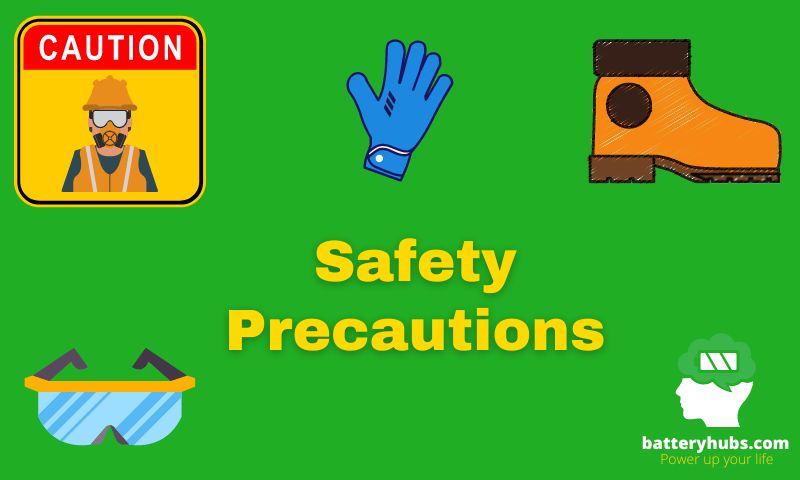
Step-02: Battery Inspection
Check the battery for any physical damage. If you notice any cracks or leaks, it’s best to replace the battery as it may be hazardous to recondition it.
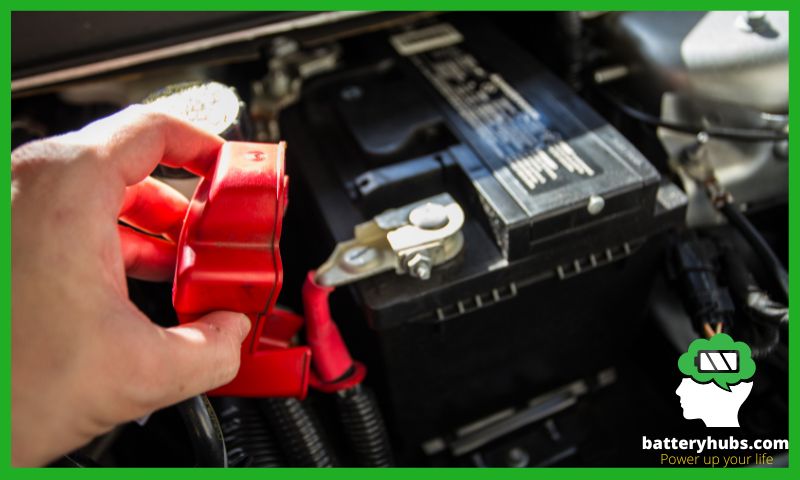
Step-03: Clean the Battery
Use a mixture of baking soda and water to clean the battery terminals. This helps to remove any corrosion that may interfere with the reconditioning process.

Step-4: Test the Battery
Use a voltmeter to check the voltage of the battery. If it’s below 12 volts, it may need reconditioning.
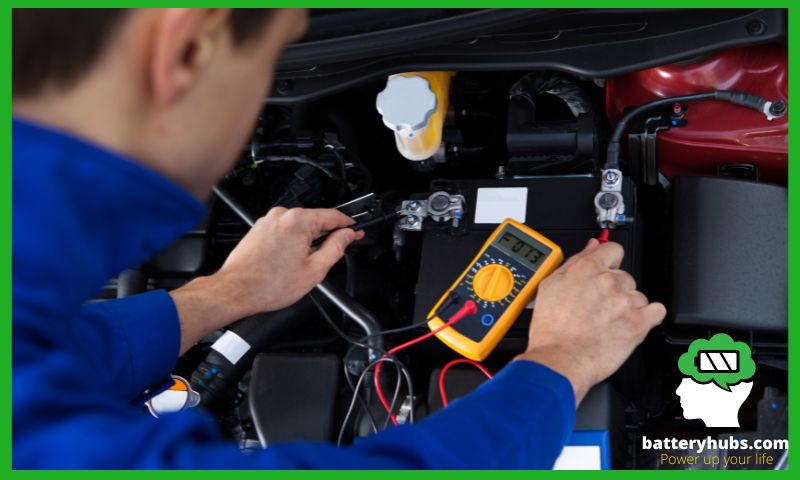
Step-05: Battery Discharge
Connect a lamp or a small electrical device to the battery to discharge it completely. This process may take several hours.
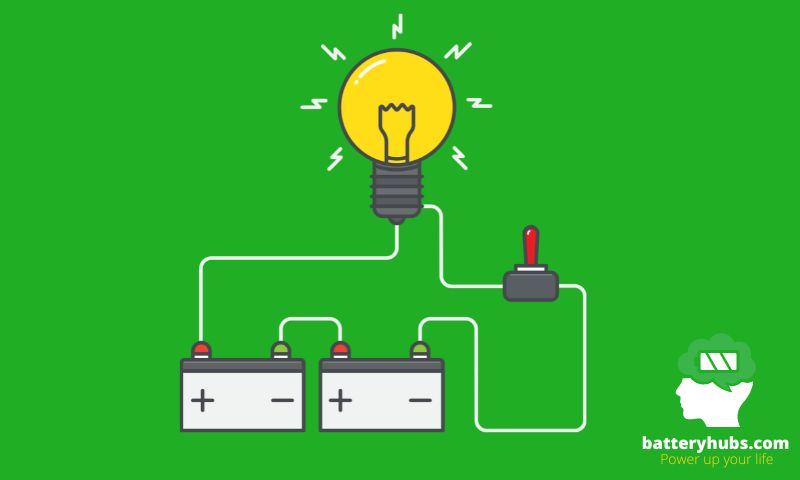
Step-06: Electrolyte Replacement
In a sealed battery, you’ll need to carefully drill holes into the battery caps to access the cells. Prepare a mixture of Epsom salt and distilled water, and then carefully pour it into each cell using a funnel. Once done, seal the holes using a suitable adhesive.
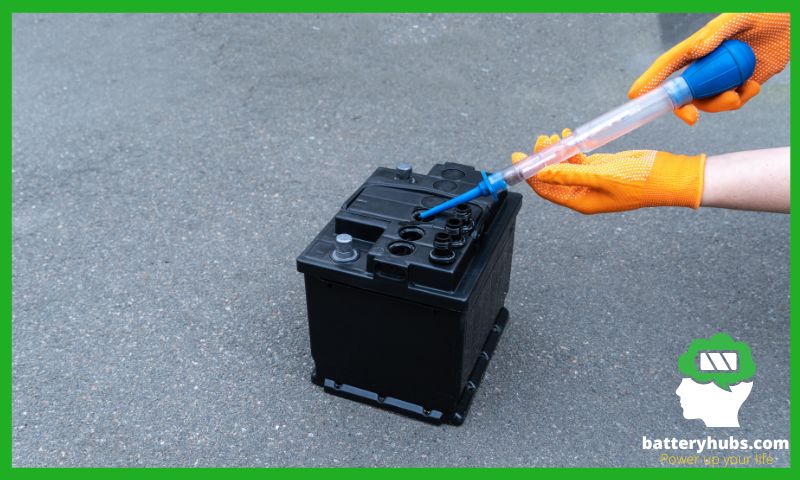
Step-07: Battery Charge
Now, connect the battery to a slow charger and let it charge for 24 hours. It’s important to use a slow charger to prevent overheating.
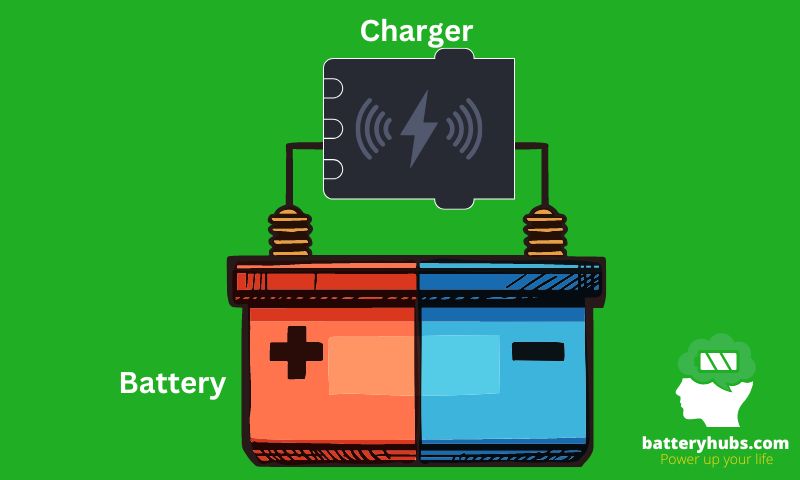
Step-08: Battery Test
After charging, use the voltmeter again to check the battery voltage. If it’s now above 12 volts, the reconditioning process has been successful.
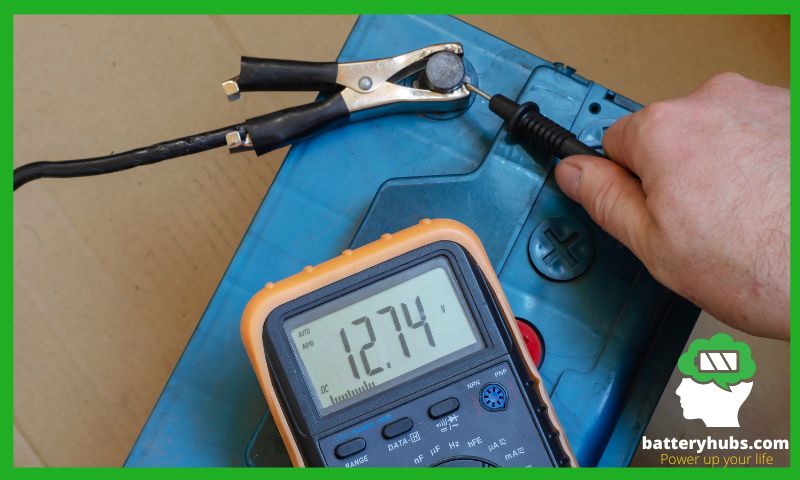
Final Steps
If the battery is working well, it’s ready to be put back into the car. Remember to monitor its performance over the next few days to ensure it’s functioning as expected.
Remember, this process may not work for all batteries, especially if they’re old or heavily damaged. Always prioritize safety when attempting to recondition a battery.
Use of Images or Diagrams for Clarity
To make this guide more user-friendly, it would be beneficial to include images or diagrams at each step. This would provide a visual aid to users, making the process easier to understand and follow.
For instance, diagrams showing how to connect the voltmeter to the battery, how to discharge the battery, or how to fill the cells with the electrolyte solution would be extremely helpful. Images of the safety gear, the appearance of a healthy versus a damaged battery, or the correct way to seal the drilled holes would also add value to the guide.
Remember, the goal is to make the reconditioning process as clear and straightforward as possible for the reader. The use of visual aids can significantly contribute to achieving this goal.
Tips for Maintaining a Reconditioned Battery
Reconditioning a sealed car battery can extend its life and save you money, but it’s not a permanent fix. The battery will eventually need to be replaced. However, with proper care and maintenance, you can maximize the lifespan of your reconditioned battery. Here are some tips:
How to Prolong the Life of the Reconditioned Battery?
- Regular Charging: Ensure your battery is regularly charged. Avoid letting it discharge completely as this can strain and damage the battery over time.
- Clean Terminals: Keep the battery terminals clean and free from corrosion. You can use a mixture of baking soda and water to clean them.
- Avoid Extreme Temperatures: Extreme cold or heat can damage the battery and shorten its lifespan. Try to park your car in a garage or shaded area whenever possible.
- Regular Inspection: Regularly inspect the battery for any signs of damage or leaks. If you notice anything unusual, it’s best to consult with a professional.
- Limit Short Rides: Short car rides prevent your car’s battery from fully charging. Preserve your battery’s health by driving it frequently and for longer periods.
Signs of a Failing Battery
Knowing the signs of a failing battery can help you prevent a breakdown. Here are some signs to look out for:
- Difficulty Starting the Car: This is often the first sign that the battery may be failing.
- Dim Lights: If your headlights or interior lights are dimmer than usual, it could be a sign that your battery is not providing enough power.
- Corrosion on the Battery Terminals: If you notice a white, powdery substance on the battery terminals, it’s a sign of corrosion, which can affect the battery’s performance.
- Swollen Battery Case: A swollen battery case can be a sign that the battery has been exposed to excessive heat, causing it to swell.
- Age: If your battery is more than 3-5 years old, it may be nearing the end of its lifespan.
Remember, regular maintenance and timely replacement of your car battery can prevent unexpected breakdowns and ensure the smooth running of your vehicle.
Conclusion
Reconditioning a sealed car battery is a practical and cost-effective solution to extend the life of your battery. Not only does it save you money, but it also contributes to environmental conservation by reducing the number of batteries that end up in landfills. However, it’s important to remember that safety should always be your top priority when handling car batteries. Always wear the necessary safety gear and work in a well-ventilated area.
The process may seem daunting at first, but with the right tools, materials, and a step-by-step guide, it’s a task that you can certainly undertake. Just remember to monitor the performance of the reconditioned battery and maintain it properly to maximize its lifespan.
In addition to reconditioning your car battery, there are several other aspects of battery maintenance and troubleshooting that you might find useful. For instance, knowing how to test an alternator by disconnecting the battery can help you diagnose potential issues with your vehicle’s charging system.
Similarly, understanding how to test a battery charger can ensure that your charger is functioning properly and effectively charging the battery. If you own a BMW, you might find our guide on how to charge a BMW battery particularly useful.
Moreover, conducting a load test on a battery can provide valuable insights into the health and performance of your battery. For those of you who use MSI laptops, our guide on how to calibrate an MSI battery can help you optimize your laptop’s battery life.
Lastly, it’s important to be aware of factors that can unnecessarily drain your battery. For instance, did you know that leaving your key fob in your car can drain your battery? Or that certain amplifiers can drain your car battery if not properly installed?
By expanding your knowledge about batteries and how to maintain them, you can ensure the longevity of your batteries and save money in the long run. So, keep exploring, keep learning, and remember – your car battery is the heart of your vehicle. Treat it well, and it will serve you reliably for years to come.
FAQ
What is battery reconditioning?
Battery reconditioning is the process of restoring a battery’s full functioning capacity. It’s not just charging; it involves cleaning the cells, fully charging, discharging, and then recharging the battery to 100%. This process can breathe new life into old batteries, extending their lifespan and saving you money.
Can all car batteries be reconditioned?
While many types of car batteries can be reconditioned, it’s not a universal solution. The success of reconditioning depends on the battery type and its condition. Lead-acid batteries are often good candidates, but always check the manufacturer’s guidelines and consult a professional if unsure.
How long does a reconditioned battery last?
The lifespan of a reconditioned battery can vary greatly, depending on the original battery’s age and condition, and how well the reconditioning process was carried out. However, with proper care and maintenance, a reconditioned battery can often provide several more years of service.
Is reconditioning a battery safe?
Battery reconditioning can be safe if done correctly and with the right safety measures. It involves handling potentially dangerous substances like battery acid, so it’s crucial to wear protective gear and work in a well-ventilated area. Always follow safety guidelines to avoid accidents.
What are the signs of a failing car battery?
Signs of a failing car battery can include dim headlights, electrical issues, a slow engine crank, and a clicking sound when turning the key. If your car requires frequent jumps or the check engine light is on, these could also indicate a battery issue. Regular checks can help spot these signs early.
